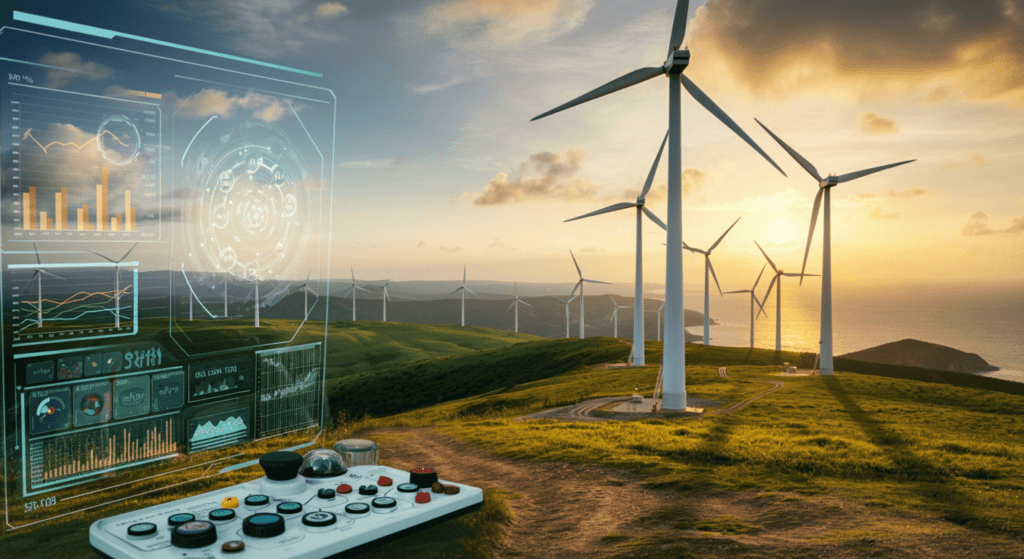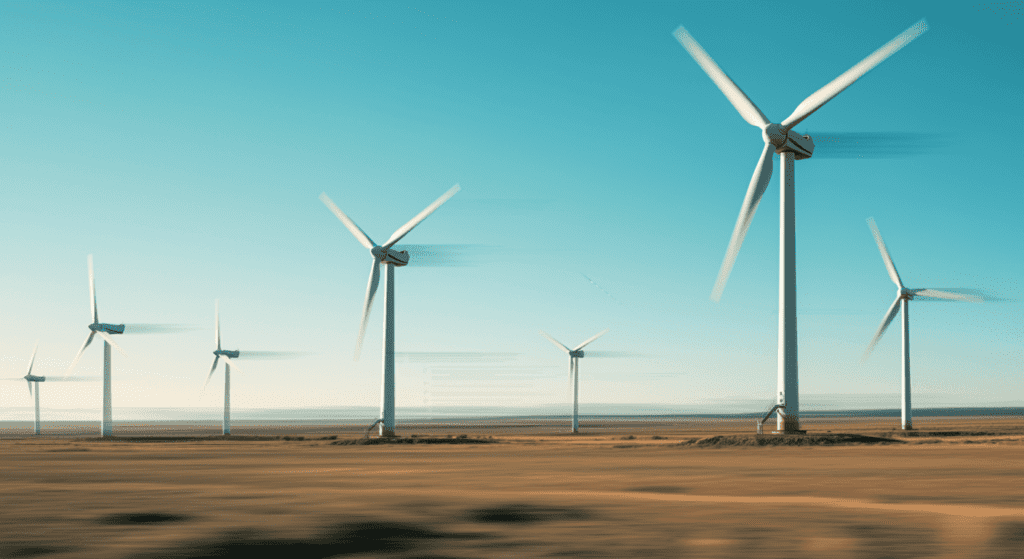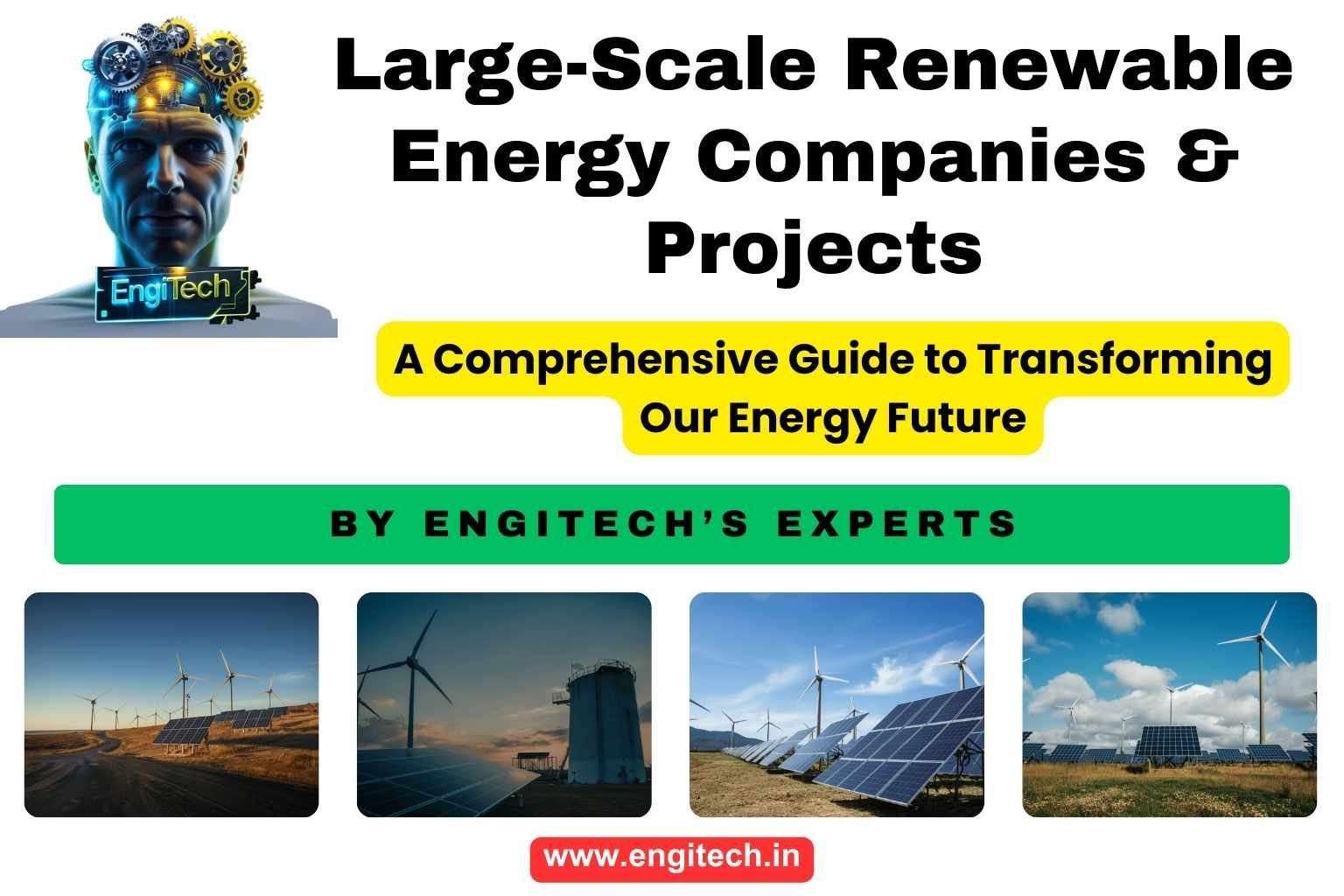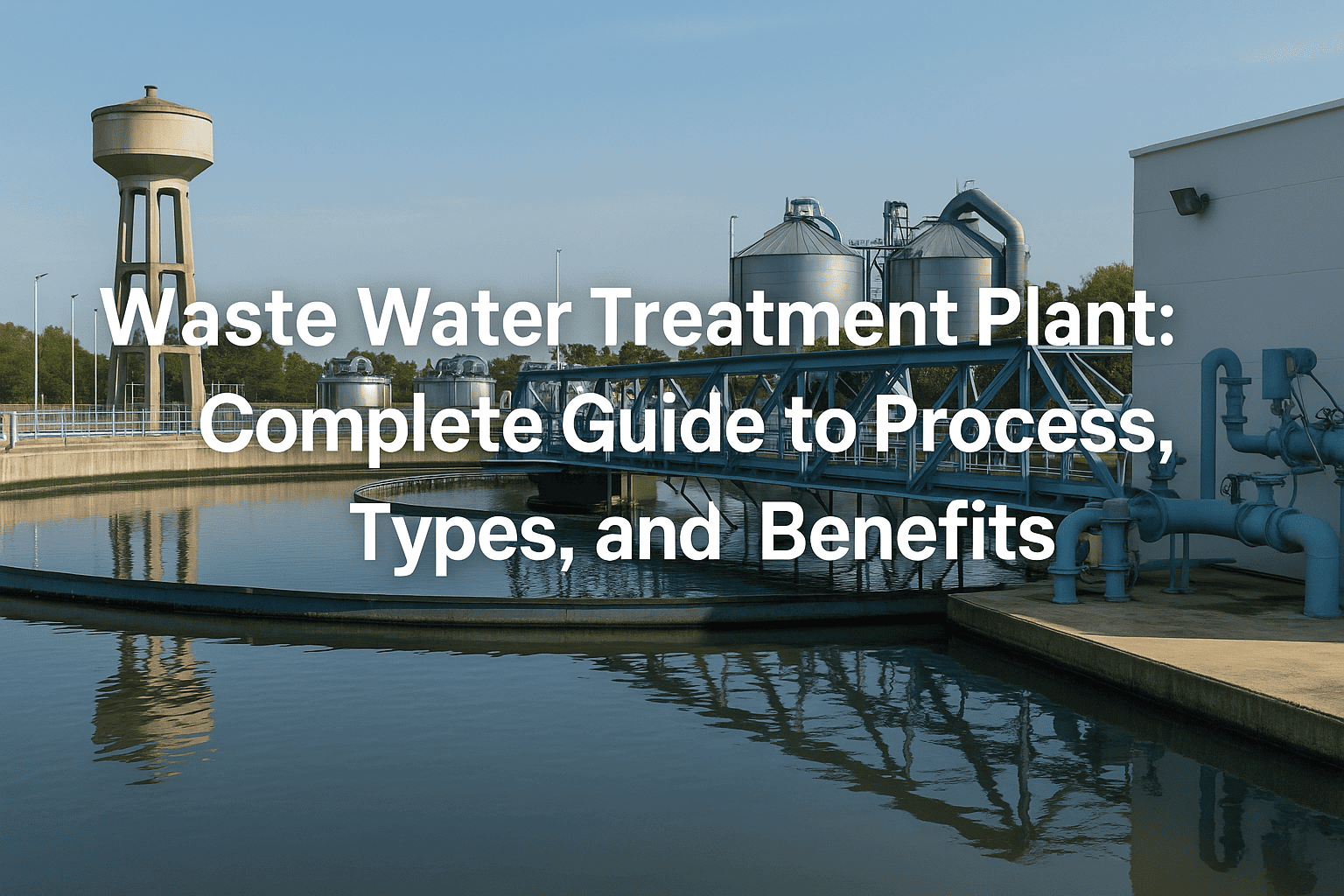Wind Energy: Harnessing the Power of Wind

Wind energy is no longer an abstract concept reserved for massive wind farms in remote regions. Today, it stands at the forefront of global energy transformation, offering a clean, renewable resource that can power everything from small homes to sprawling industrial facilities. Within the first few paragraphs, you’ll discover how wind energy works, the different types of wind power plant configurations, and why it’s a critical piece in solving our world’s growing energy demands.
In this comprehensive guide, we’ll explore a rich tapestry of wind power information—from the basic science behind wind turbines to the practical steps for launching your own wind power project. If you’ve ever wondered whether a wind turbine power plant can serve your home or business, or if you’re curious about emerging innovations in windmill power plant design, this article will equip you with the expertise, data, and insights you need to make informed decisions. Let’s dive in and uncover how you can harness the power of wind to achieve energy independence, reduce carbon footprints, and contribute to a more sustainable future.
Table of Contents
1. Introduction: A New Dawn for Wind Energy
Imagine a world where our power grids are fueled by gusts of wind sweeping across prairies, coastlines, and even urban rooftops. This is not some distant fantasy. For millions of people worldwide, wind energy has already become a practical reality. Accelerated by technological advancements and a pressing need to cut carbon emissions, wind energy adoption is growing at a remarkable pace.
Whether you’re an environmental enthusiast, a property owner exploring renewable energy, or a policymaker looking to fund the next big wind project, understanding the intricacies of wind energy is crucial. In this article, we’ll examine how a wind turbine plant works, why the cost of wind energy is dropping, and how communities worldwide are benefiting from cleaner air and a stable energy supply.

2. Understanding Wind Energy: The Basics
What Exactly Is Wind Energy?
At its core, wind energy is the process of converting the kinetic energy in moving air into electricity. As wind flows across turbine blades, it causes them to spin. This mechanical motion is then converted by a generator into electrical energy. The concept might seem simple, but the technology behind modern wind turbine projects is both sophisticated and continually evolving.
Why Is Wind Energy Important?
- Renewability: Wind is naturally replenished. As long as the sun heats the Earth’s atmosphere unevenly, air currents will keep forming.
- Emission Reduction: Generating electricity through wind power emits no direct greenhouse gases, helping reduce our carbon footprint.
- Energy Independence: By investing in wind power plants, countries and communities can lessen reliance on fossil fuels and foreign energy imports.
- Scalability: From a wind power plant for home use to utility-scale wind farms capable of powering entire cities, the technology scales to different needs.
Key Terms to Know
- Wind Energy Plants: These are facilities designed to capture and convert wind into usable electricity.
- Wind Turbine: The rotating device with blades that harnesses wind and turns it into mechanical energy.
- Windmill Power Plant: Traditional windmills historically ground grain or pumped water, but in modern parlance, some refer to any wind-powered machine as a “windmill.”
- Solid Wind Power 25 KW: A category of small to medium-sized wind turbines (often around 25 kW capacity) suitable for farms, large residential properties, or small businesses.
Understanding these fundamentals lays the groundwork for delving deeper into how we can use wind to power our homes, businesses, and even entire industries.
3. A Brief History of Wind Power
Ancient Beginnings
Wind power has been around for millennia, although it was initially harnessed to perform mechanical tasks. Ancient Persians employed vertical-axis windmills for milling grain and pumping water as early as the 7th century. Similar technologies appeared in China and the Middle East before spreading to Europe.
The Evolution of Modern Wind Turbines
- 19th Century Windmills: American farms were dotted with wooden-blade windmills that drew water from wells.
- First Electricity-Generating Wind Turbine: In the late 19th century, inventors in Scotland and the United States developed prototypes for generating electricity from wind.
- Post-1970s Boom: The oil crisis in the 1970s prompted governments worldwide to explore alternative energy sources, spurring the growth of commercial wind turbine plants.
- 21st Century Innovation: Modern turbines are more efficient, quieter, and equipped with advanced materials and sensors. This sophistication has expanded the scope of wind turbine projects to offshore installations and large onshore wind farms.
4. How Do Wind Turbines Work?
Core Principles
Wind turbines operate on a simple principle: wind pushes against blades mounted on a rotor, causing them to spin. This rotor connects to a shaft that turns a generator, creating electricity. The higher and more consistently the wind blows, the more electricity is generated.
Blade Design
- Aerodynamic Shape: Similar to airplane wings, turbine blades use aerodynamic lift to optimize rotational force.
- Materials: Commonly fiberglass, carbon fiber, or composite materials for durability and efficiency.
Generator and Gearbox
- Gearbox: In many turbines, a gearbox steps up the rotor’s speed before it enters the generator.
- Direct-Drive Systems: Some modern turbines eliminate the gearbox entirely, reducing mechanical complexity and maintenance costs.
Control Systems
- Yaw System: Orients the turbine to face the wind for maximum energy capture.
- Pitch Control: Adjusts blade angles to optimize rotation speed and protect the turbine from dangerously high wind speeds.
5. Key Components of a Wind Turbine Power Plant
A wind turbine power plant (often called a wind farm when multiple turbines are installed) consists of more than just towering turbines. Each element contributes to the overall functionality, reliability, and efficiency of the system.
- Turbines: The primary energy capture devices, typically erected on tall towers to access stronger, more consistent winds.
- Towers: Steel or concrete structures designed to maximize height and stability while withstanding environmental conditions.
- Electrical Substation: Converts the generated electricity to the appropriate voltage for transmission across the grid.
- Transmission Lines: Carry electricity from the wind farm to local or regional grids.
- Control and Monitoring Systems: State-of-the-art software ensures each turbine performs optimally, providing real-time data on wind speeds, power output, and turbine health.
Windmill power plants in smaller or traditional setups may have a simplified configuration. Yet, whether you’re dealing with a large-scale commercial wind farm or a residential wind power plant for home, the objective is the same: convert wind energy into consistent, usable power.

6. Types of Wind Power Plant Systems
To understand the breadth of wind power information, we must recognize the different forms these projects can take. Each type caters to distinct needs, geographies, and resource availabilities.
1. Onshore Wind Farms
- Location: Land-based, usually in open fields, plains, or hilltops where wind speeds are moderate to high.
- Advantages: Lower installation costs compared to offshore; easier maintenance access.
- Challenges: Land availability, potential noise or visual impact on nearby communities.
2. Offshore Wind Farms
- Location: In bodies of water, typically a few miles or more off the coast.
- Advantages: Strong, consistent wind speeds, less visual or noise pollution to inhabited areas.
- Challenges: High construction and maintenance costs, complex logistics.
3. Distributed or Community Wind Projects
- Location: Near or within communities, farms, or commercial properties.
- Advantages: Empowers local ownership, reduces transmission losses, fosters community sustainability initiatives.
- Challenges: Requires cooperative local policies and community investment.
4. Micro or Small-Scale Turbines
- Location: Homes, small businesses, farms, or remote locations off-grid.
- Advantages: Can be as small as solid wind power 25 KW units, offering independence from the grid.
- Challenges: Limited power output, requires consistent wind speeds, sometimes higher upfront cost relative to energy output.
5. Hybrid Systems
- Location: Often integrated with solar panels in rural areas or off-grid locations.
- Advantages: Diversifies energy sources; can offer near-constant power supply.
- Challenges: Higher complexity in design and cost.
These types of wind power plant systems illustrate that wind energy solutions come in various forms, each tailored to specific operational requirements and budgetary constraints.
7. Wind Power Plant for Home: Is It Feasible?
The idea of having a personal wind power plant for home is no longer a far-fetched dream. Residential wind turbines are becoming more accessible, thanks to declining costs and improved technology. Before embarking on this path, consider the following factors:
- Local Wind Speeds: Consistent wind speeds of at least 4–5 m/s (around 9–11 mph) are often recommended for small turbines.
- Zoning and Permits: Local regulations may limit tower height, noise, or placement.
- System Size: Small turbines usually range from 1 kW to 10 kW, though larger solid wind power 25 KW units can power bigger homes or farms.
- Cost Analysis: Installation can vary widely, from a few thousand dollars to tens of thousands, depending on turbine size and installation logistics.
- Net Metering: In regions where utilities offer net metering, excess electricity can be fed back into the grid, offsetting utility costs.
Pro Tip: Consult wind resource maps and possibly hire an expert to conduct a wind feasibility study of your property. Even a modest wind turbine can significantly reduce electricity bills if sited in a consistently breezy location.
8. Economics and ROI of Wind Energy Projects
Initial Costs
- Turbine Purchase: The most significant expense, ranging from thousands of dollars for residential units to millions for commercial turbines.
- Infrastructure: Roads, foundations, substations, and grid connections.
- Permitting: Administrative, environmental, and land-use permits.
Ongoing Costs
- Maintenance: Routine inspections and occasional part replacements, such as gearboxes or blades.
- Insurance: Covers potential damage, liability, and business interruption for larger projects.
Return on Investment (ROI)
For wind turbine projects, ROI can be impressive when the site is well-chosen and wind conditions are consistent. According to data from the U.S. Department of Energy, commercial wind farms can recoup their investment in as little as 5–10 years. Residential wind turbines vary more widely but can reduce electricity bills substantially over their lifespan, often 20–25 years.
Government Incentives and Policies
Many countries offer tax credits, rebates, or grants to encourage the adoption of wind energy plants. Policies such as feed-in tariffs or net metering also provide ongoing financial benefits for project owners. Always explore local, state, or national incentives, as these can significantly lower your startup costs and expedite ROI.

9. Environmental Impact and Sustainability
Reduction of Greenhouse Gases
The most obvious benefit of adopting wind energy is the dramatic cut in carbon dioxide and other greenhouse gas emissions. Unlike fossil fuel plants, wind power plants emit no pollutants during operation.
Land Use Considerations
Wind turbines can coexist with farming or grazing on the same land, making them one of the more land-friendly renewable solutions. Some concerns do exist regarding bird and bat populations, but modern turbine designs and siting guidelines help mitigate these effects.
Water Conservation
Unlike coal or nuclear plants, wind energy plants require minimal water. This conservation of water resources is increasingly significant, especially in drought-prone regions.
Community and Social Impact
Well-implemented wind project initiatives can stimulate local economies by creating jobs in manufacturing, construction, and maintenance. Communities also benefit from lease payments made to landowners hosting turbines, thereby fostering economic resilience in rural areas.
10. Real-World Examples of Successful Wind Projects
1. Horns Rev Offshore Wind Farm (Denmark)
One of the world’s first large-scale offshore wind farms, Horns Rev has consistently proven the viability of placing turbines at sea. Strong, steady wind speeds translate to high energy outputs.
2. Alta Wind Energy Center (California, USA)
Encompassing thousands of acres in the Tehachapi Pass, Alta is among the largest wind farms in the U.S., showcasing how large-scale wind power plants can transform regional energy grids.
3. Community Wind Farms (Germany)
Germany’s Energiewende (energy transition) policy has spurred community-owned wind projects, demonstrating how localized approaches can effectively scale up renewable energy and engage citizens in wind power generation.
These real-world examples illustrate how strategic planning, supportive policies, and technological innovation contribute to the success of wind turbine projects.
11. Setting Up Your Own Wind Power Project: A Step-by-Step Guide
If you’re ready to launch a wind power project, understanding each phase of development is critical. While the scope may vary—commercial versus residential—these steps offer a comprehensive roadmap.
Step 1: Feasibility Study and Resource Assessment
- Wind Assessment: Gather local wind speed data using meteorological stations or third-party reports.
- Site Analysis: Evaluate land availability, zoning laws, and environmental factors (bird migration paths, wetlands).
Step 2: Securing Permits and Approvals
- Local Regulations: Height restrictions, noise limits, or visual impact guidelines.
- Environmental Impact Study: Larger wind projects often require a thorough review of wildlife and habitat impacts.
- Grid Connection: Coordinate with local utility companies for integration and net metering (if available).
Step 3: Financing and Incentives
- Budget Planning: Factor in turbine costs, installation, and possible contingencies.
- Incentive Research: Seek grants, tax credits, and rebates at local or national levels.
- Investor Engagement: For larger projects, present a solid business plan to potential stakeholders or banks.
Step 4: Engineering and Procurement
- Turbine Selection: Match turbine capacity to your wind resource data.
- Supplier Agreements: Negotiate contracts for turbines, towers, and electrical components.
- Construction Planning: Identify timelines, workforce, and required machinery.
Step 5: Installation and Commissioning
- Foundation Laying: Secure tower foundations in properly cured concrete.
- Turbine Assembly: Erect towers, mount nacelles, and attach blades following manufacturer guidelines.
- Electrical Hook-up: Connect turbines to substations and the grid.
- Testing: Verify performance, safety systems, and grid synchronization.
Step 6: Operation and Maintenance
- Routine Inspections: Schedule periodic blade checks, lubrication, and software updates.
- Monitoring Systems: Use remote sensing and SCADA systems (Supervisory Control and Data Acquisition) for real-time performance tracking.
- Troubleshooting: Have an established protocol for equipment failures or weather-related damages.
Following these steps meticulously can make the difference between a profitable wind turbine power plant and a project that struggles.
12. Future Trends and Innovations in Wind Energy
As the demand for wind energy plants grows, researchers and developers are pushing boundaries to optimize efficiency, cut costs, and expand applicability.
Floating Wind Turbines
Offshore wind farms are moving into deeper waters, thanks to floating turbine platforms. This approach allows wind projects in regions previously deemed too deep or unsuitable for fixed foundations.
Advanced Materials
Developments in composite materials are making blades lighter and more durable. Expect longer blade lifespans, reduced maintenance, and higher efficiency.
Energy Storage Integration
Battery and other energy storage solutions are increasingly being paired with wind power to offset intermittency. This ensures a stable power supply even when wind speeds fluctuate.
Digital Twins and AI
Wind turbine projects now utilize digital twin technology to simulate performance in various conditions, enabling predictive maintenance. AI algorithms analyze data to identify optimal turbine settings, significantly boosting energy output.
Community-Driven Microgrids
Rural and remote areas can increasingly look forward to microgrids powered by a mix of wind power plant solutions and solar panels. These microgrids reduce reliance on diesel generators and extend power availability to regions without robust grid infrastructure.
13. Frequently Asked Questions (FAQ)
Below are some common questions people have about wind energy and wind power plant setups. Each answer provides quick, authoritative guidance.
- What is the difference between a windmill power plant and a wind turbine plant?
Traditionally, “windmill” refers to structures used for mechanical tasks like grinding grain. Modern “wind turbine plants” focus on electricity generation. While the terms are sometimes used interchangeably, “wind turbine” is more precise when discussing electrical power. - How tall does a typical commercial wind turbine stand?
Many commercial turbines range between 80 to 120 meters (roughly 262–394 ft) tall, not counting the blade length. Taller turbines capture stronger, more consistent winds. - Is it possible to combine solar and wind energy on the same property?
Absolutely. A hybrid system can leverage sunny days and windy nights, enhancing overall energy security and reducing reliance on the grid. - How does “solid wind power 25 KW” fit into the renewable energy landscape?
The 25 kW category typically suits farms or small businesses, providing a middle-ground solution. It’s large enough for meaningful energy generation but still manageable for property owners without utility-scale ambitions. - What are some types of wind power plant configurations for different budgets?
- Small Residential Systems (1–10 kW): Cost-effective for individual homes with moderate energy demands.
- Medium-Scale (10–100 kW): Ideal for farms, schools, or community projects.
- Large-Scale Commercial (1 MW and above): Power utilities, large businesses, or multi-turbine wind farms.
Conclusion & Next Steps
From residential setups to vast offshore farms, Wind Energy: Harnessing the Power of Wind has the potential to redefine our energy landscape. By investing in wind power—be it a small wind power plant for home or a commercial-scale wind turbine power plant—we collectively move toward a cleaner, more sustainable, and resilient global energy system.
Before you close this page, remember:
- Site Assessment: It all starts with knowing your wind resources and local regulations.
- Project Planning: Permitting, financing, and stakeholder engagement are key to success.
- Long-Term Vision: Wind energy isn’t a short-term fix; it’s a long-term strategy that pays dividends for communities, businesses, and the planet.
Ready to take the next step? Here’s your call to action:
- Share Your Thoughts: Drop a comment or share your experience if you’ve explored or installed wind energy systems.
- Subscribe for Updates: Sign up for our newsletter to stay informed about new technologies, upcoming incentives, and best practices for wind projects.
- Explore Related Resources: Check out our in-depth articles on Solar Energy Solutions and Hydroelectric Power Innovations to broaden your renewable energy toolkit.
- Get Professional Guidance: If you’re serious about launching your own wind project, consult with accredited engineers or renewable energy experts to tailor a solution specific to your location and budget.
By weaving wind power information into your energy plans, you aren’t just making an eco-friendly choice—you’re actively shaping a more sustainable future. Whether it’s a small solid wind power 25 KW unit or a sprawling wind power plant, every blade that turns in the breeze is a step toward a cleaner, more equitable energy landscape. Embrace the momentum, and let the power of wind elevate your energy journey.
Stay Connected with EngiTech
EngiTech is your trusted source for in-depth knowledge on industrial mechanical engineering machines and technologies. Stay ahead with the latest innovations, expert insights, and practical guides designed to help you make informed decisions for your business and engineering needs. Join our growing community of professionals and industry leaders to stay updated and competitive in the ever-evolving world of industrial technology.


